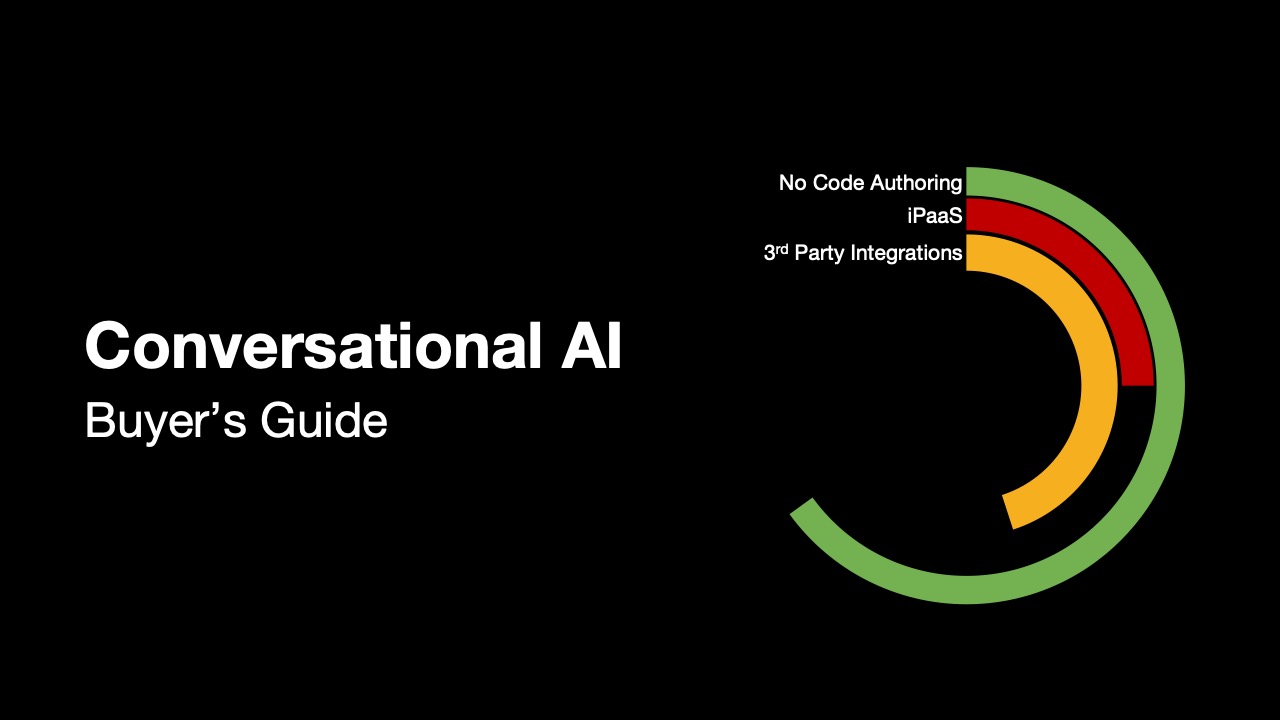Digital transformation is more than a buzzword or cliche. It is a call for companies to create meaningful digital customer and employee experiences to remain relevant and continue delivering value.
Today’s smartphone-enabled, digitally connected consumers and employees expect the companies they transact business with or work for to become digitally driven, not merely digitally “influenced.”
That’s what happened when Netflix went from sending DVDs through the mail to digital downloads. It’s the difference between now-defunct Borders and Amazon, Yellow Cab and Uber, Gillette and Dollar Shave Club.
Effective digital transformation can’t be window-dressing. It calls for a change in thinking that affects practically every process, strategy, and company culture. When departments are aligned and able to collaborate seamlessly, the chances for success significantly increase.
Digital Transformation Defined
We at Krista Software define Digital Transformation as the shift in how IT capabilities are delivered such that humans are at the center of the human to computer interaction model.
For years we have seen IT build computational silos for internal and external customers. However, as interconnected processes span silos, we expect users to understand the complexity and fill in the gaps. Thus, digital transformation drives us to build and orchestrate IT assets to empower people with technology geared to how they intend to consume it. Transformations occur when non-digital or traditionally manual processes are replaced with digital technology that seamlessly connects people and systems.
Digital transformation can refer to anything from IT modernization (cloud computing, for example) to digital optimization to the invention of new digital business models. —Gartner
Digital transformation involves optimizing processes to make workflows faster, easier, and more efficient. Instead of spending hours processing paperwork, organizations can create digital workflows that increase efficiency, allowing employees to focus their time and attention on higher-value innovations and responsibilities.
Digital Transformation’s Impact
Digital transformation’s impact sweeps across entire industries, including manufacturing, retail, transportation, entertainment, logistics, and supply chains, finance, healthcare, and more.
According to the United Nations, digital technologies can help end extreme poverty, reduce maternal and infant mortality, promote sustainable farming and decent work, and achieve universal literacy. We are honored to be participating in initiatives with these very outcomes.
Successful Digital Transformations
Forbes reports that Starbucks will emerge from the COVID-19 pandemic stronger than before thanks to digital transformation. The brand’s use of electronic payments, mobile apps, pickup-only stores, and third-party delivery networks have long been part of its omnichannel strategy. Now, theirs is a digital-first strategy that puts them miles ahead of competitors.
Anheuser-Busch (AB) InBev looked at applying digital transformation throughout all its business units while retaining a customer-centric focus.
One of the ways it did this was by changing how stores restock their shelves. AB InBev built a mobile application called B2B, which uses an ML algorithm to make replenishment recommendations. The company also created a tech innovation lab called Beer Garage that uses AI, ML, and IoT to improve customer and retailer experience.
Digital Transformation Fails
While there are a growing number of examples touting digital transformation success, failure is still the norm.
KPMG found that 96% of organizations were embarking on some phase of digital transformation, but Forbes reported that 84% had failed.
According to an Everest Group study, 73% of companies declined to provide any business value from their digital transformation process. A key factor attributing to these failures is fatigue from continual change.
A Gartner survey found that digital experiences like placing a retail order, submitting a service request to a bank, purchasing life insurance, paying a government bill, and checking the status of healthcare benefits did not live up to expectations for 84% of customers.
A Capgemini study found that organizations feel less equipped with digital leadership capabilities (35%) and the right digital capabilities (39%) to transform businesses and workflows using innovative digital technologies.
Digital Transformation and Customer Experience
Becoming a digitally driven company must start with a commitment to providing an excellent customer experience (CX). Such transformation is essential if businesses expect to prove their worth in the eyes of smartphone-carrying, digitally savvy consumers.
Digital Transformation and Customer Expectations
Customers expect exceptional digital experiences. A Salesforce study found that 80% of customers view “the experience” a company provides as equal to its products and services.
To that end, 89% of enterprises are adopting digital technologies to redefine their CX strategy, Everest Group reports. As a result, it expects the CX services market to expand at a compound annual growth rate (CAGR) of 20-22% through 2025.
“This digital transformation has given companies the resources to supply instantaneous communication, seamless cross-channel support, unique customer journeys, and a higher degree of transparency,” said digital adoption platform Userlane.
Employee Experience Taking Center Stage
Although the current focus remains on CX, employee experience (EX) is just as important. In addition, newer technology, work from home, and shopping habits driven by millennials, Gen-Z’s, and the pandemic are increasing expectations for workplaces to support advances like used at home.
A study by market research firm Pen Schoen Berland found that 82% of millennials can be swayed in their career decisions by a digitally equipped office. In comparison, 42% said they would leave a company due to “substandard technology.”
Workplace technology often presents users with disjointed, confusing, and frustrating experiences. To cite a specific (somewhat infamous) example, Citibank accidentally sent $900 million to lenders early, causing significant financial harm to the bank. The failure is attributed to a software user interface that was so bad employees and contractors could not fully understand the technology. Citibank took the matter to court and tried to get the money back, but the court ruled against the bank. It was an expensive lesson.
Failures similar to the Citibank example demonstrate how business application environments and home or mobile application environments vary. The consumerization of IT shifted expectations to how applications should work. Younger generations that grew up on the internet and mobile expect all applications to work together seamlessly as they do on a smartphone. Technology allows one to take a photo, SMS, tweet, and simultaneously appear on a separate device like a tablet. The application workflows are seamless across different apps and hardware. Business applications lack this seamless look since security and business rules constrain them. However, employees still expect business apps to follow the same user-centric model when sharing data across applications and devices.
Employees want a seamless digital experience at work like they get at home—period.
Digital Transformation and Business Profit
There is another reason to mandate such change aside from remaining relevant and providing a valuable customer and employee experience. That reason: profit.
But can digital transformation enable companies to increase profit margins? A volume of research shows that, indeed, it not only can but does:
An Aberdeen Group study found the top 20% of companies as measured by their “quality of digital customer experience” had an average year-on-year revenue increase of 35%, compared to 7.7% for the rest.
MIT reports that digitally advanced companies create 9% more revenue and are 26% more profitable than industry competitors.
Digitally “mature” companies are three times likelier than lower-maturity organizations to report annual revenue growth significantly higher than the industry average, said Deloitte.
Successful organizations are wreaking digital rewards and increasing profits. The profits enable these businesses to reinvest in digital programs and increase their lead over less digital-savvy competitors.
Humanizing Digital Transformation
As we consider the implications of digital transformation in business, we must ask ourselves an essential question: Are we transforming systems to understand humans or changing human behavior to fit the system?
We would argue that digital transformation in its highest and best form should be about technology understanding humans rather than digitizing business processes for the sake of making them digital. Following that path, conversational AI will radically transform businesses.
Digital transformations turn customer and employee touchpoints into fast, frictionless interactions that enable people to communicate with technology using multiple channels, such as chatbots, SMS, email, browsers, and more. Those interactions include everything from answering a question to triggering a back-end process to carry out a complex transaction or document creation.
Think about the evolution of technology. From paper to computers through the web to smartphones and wearables, and increasingly with IoT, businesses must continuously embrace new technologies to power their progress.
No one needs training to use WhatsApp or Facebook at home, so why do we still need to train users on business applications? Instead of digitally transforming a business to require users — customers and employees — to learn complicated systems, wouldn’t it make more sense to take advantage of WhatsApp-like functionality that everyone already knows how to use?
It makes sense to us, which is why we created intelligent automation designed to leverage existing IT assets in business workflows using a simple conversational interface. If you can text, or use WhatsApp, then you can use our platform.
The consumerization of IT is inevitable. The young and future workforce are accustomed to having the computing power of a 1960’s mainframe in their hands. And, it’s not only power but personalization. Devices like Siri and Alexa influence future enterprise application development as well.
Let’s Talk
Starting conversation is a huge milestone. Think of when a child speaks its first word. After they receive feedback, they begin to form sentences and begin to really communicate. Then, realize how far you can take it in the other direction with advanced conversations like in a Star Trek episode. Captain Picard uses conversation to seamlessly communicate with androids, people, AND systems to complete complex tasks.
It can be that simple.
Transforming your business processes using digital technologies depends on your foresight and what you think may or may not be capable. Small steps may be obsolete by the time you implement them. On the other hand, you may feel giant leaps may be too daunting for your organization. With Krista, it’s simple. Krista integrates with your existing systems enabling your organization to provide an easy-to-use conversational interface and orchestrate people and systems with intelligent automation.
Frequently Asked Questions
Digital transformation incorporates digital technology to build new or adapt to current business processes, culture, and customer experiences. It requires examining and reinventing all facets of an organization, including employee skill sets. In addition, digital transformation adds value to every customer interaction.
The ultimate goal of digital transformation is to streamline a company’s workflows. However, most companies fail at digital transformation because employees often resist change and do not utilize technology to their advantage. Another reason digital transformations fail is the failure to communicate goals set for the digital transformation initiative.
Digital transformation has numerous benefits. Some of the key benefits are:
- Increased transparency among stakeholders
- Improved metric tracking
- Increased efficiencies due to optimized processes
- Improved collaboration among teams
- Increased focus on enhancing customer experiences





